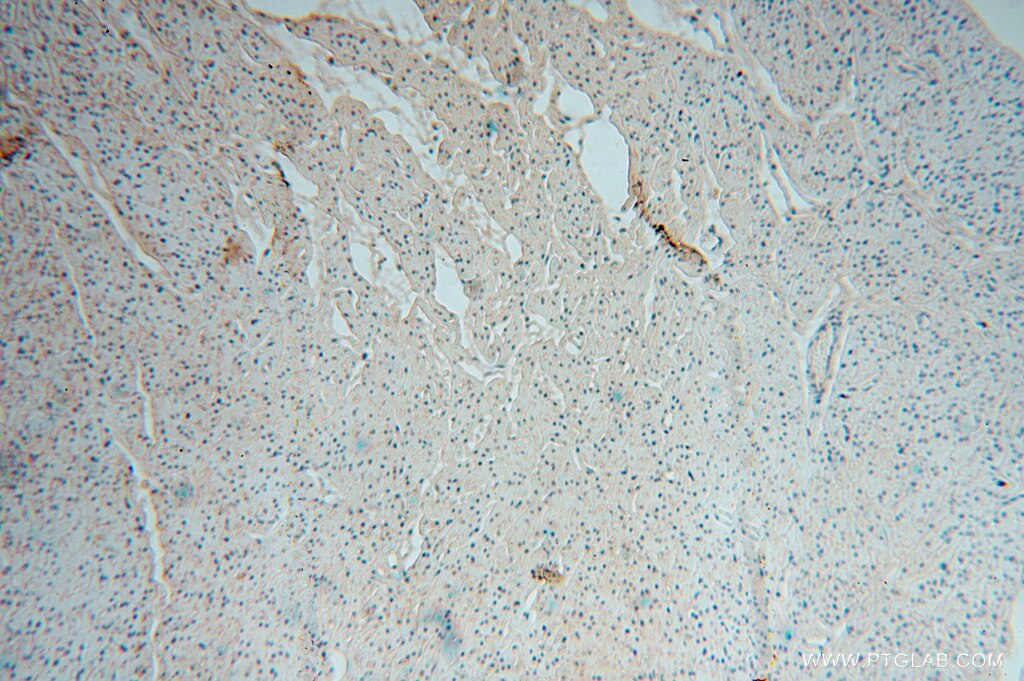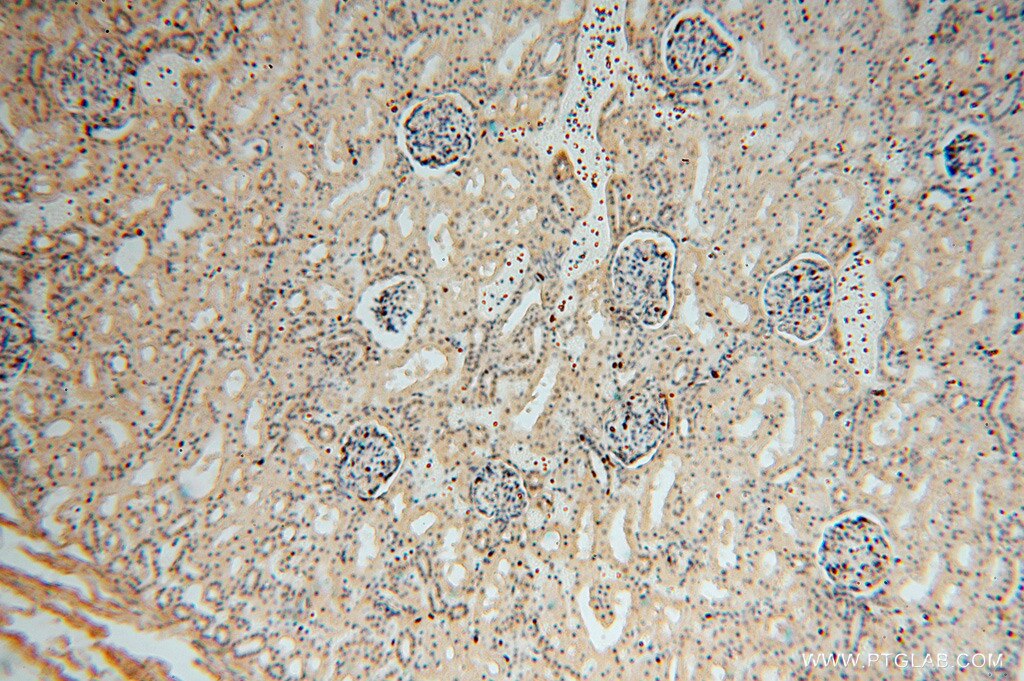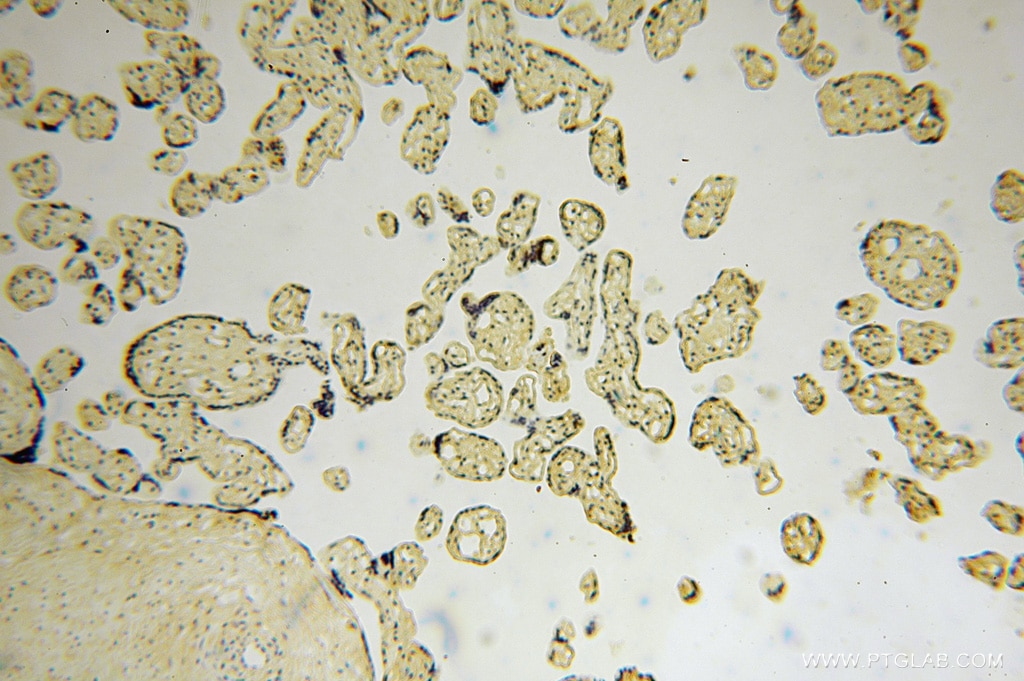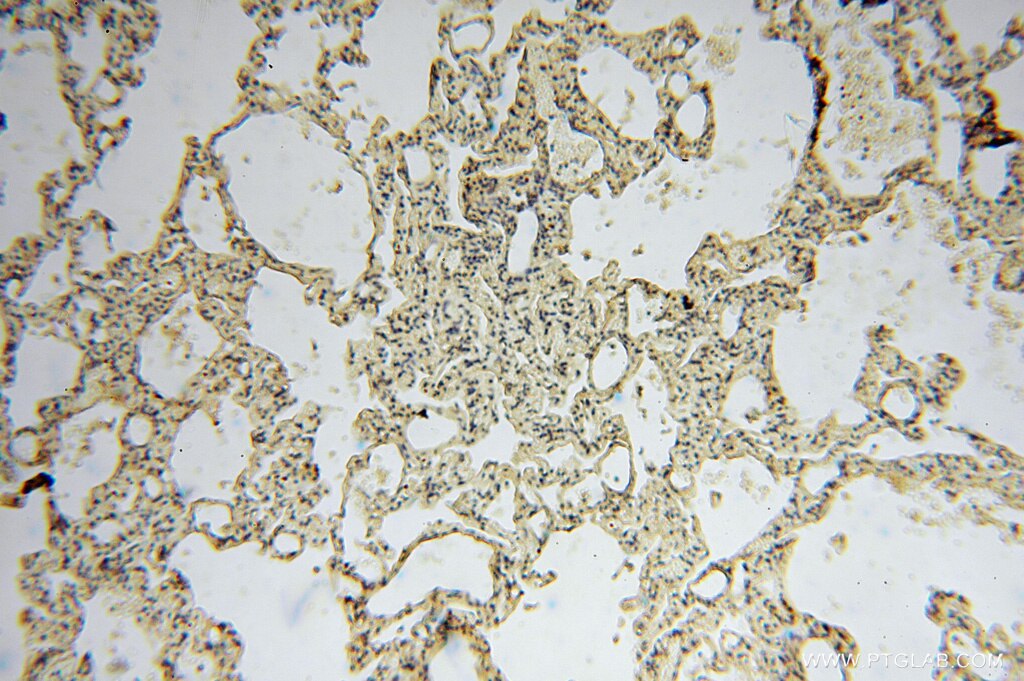Anticorps Polyclonal de lapin anti-CD36
CD36 Polyclonal Antibody for ELISA
Hôte / Isotype
Lapin / IgG
Réactivité testée
Humain, rat, souris
Applications
ELISA
Conjugaison
Non conjugué
N° de cat : 11378-1-AP
Synonymes
Galerie de données de validation
Informations sur le produit
11378-1-AP cible CD36 dans les applications de ELISA et montre une réactivité avec des échantillons Humain, rat, souris
| Réactivité | Humain, rat, souris |
| Hôte / Isotype | Lapin / IgG |
| Clonalité | Polyclonal |
| Type | Anticorps |
| Immunogène | CD36 Protéine recombinante Ag1857 |
| Nom complet | CD36 molecule (thrombospondin receptor) |
| Masse moléculaire calculée | 472 aa, 53 kDa |
| Numéro d’acquisition GenBank | BC008406 |
| Symbole du gène | CD36 |
| Identification du gène (NCBI) | 948 |
| Conjugaison | Non conjugué |
| Forme | Liquide |
| Méthode de purification | Purification par affinité contre l'antigène |
| Tampon de stockage | PBS with 0.02% sodium azide and 50% glycerol |
| Conditions de stockage | Stocker à -20°C. Stable pendant un an après l'expédition. L'aliquotage n'est pas nécessaire pour le stockage à -20oC Les 20ul contiennent 0,1% de BSA. |
Informations générales
CD36, also named as GP3B and GP4, is an 88-kDa membrane glycoprotein present on platelets, monocytes, erythroid precursors, endothelial cells, and several tumor cell lines. CD36 binds to collagen, thrombospondin, anionic phospholipids, long chain fatty acids and may function in the transport and/or as a regulator of fatty acid transport and oxidized LDL. CD36 may function as a cell adhesion molecule. It mediates cytoadherence of Plasmodium falciparum parasitized erythrocytes. Mutation of CD36 will cause platelet glycoprotein IV deficiency which known as CD36 deficiency. Genetic variations in CD36 are associated with susceptibility to coronary heart disease type 7 (CHDS7).





